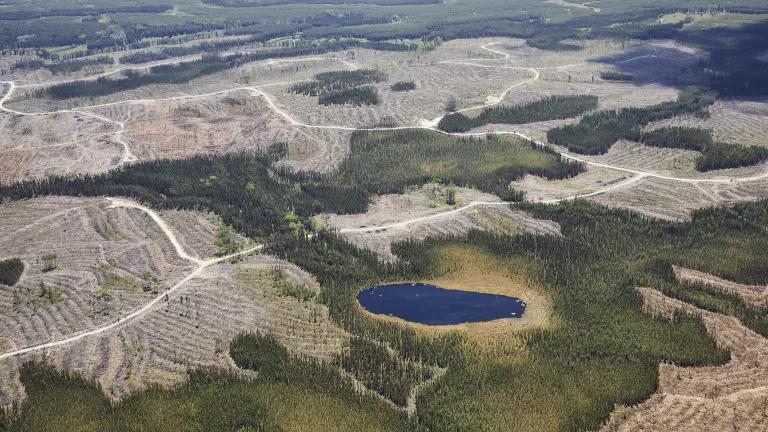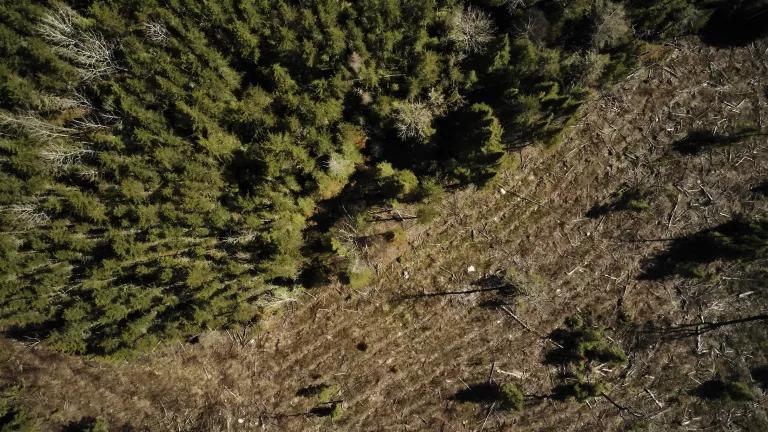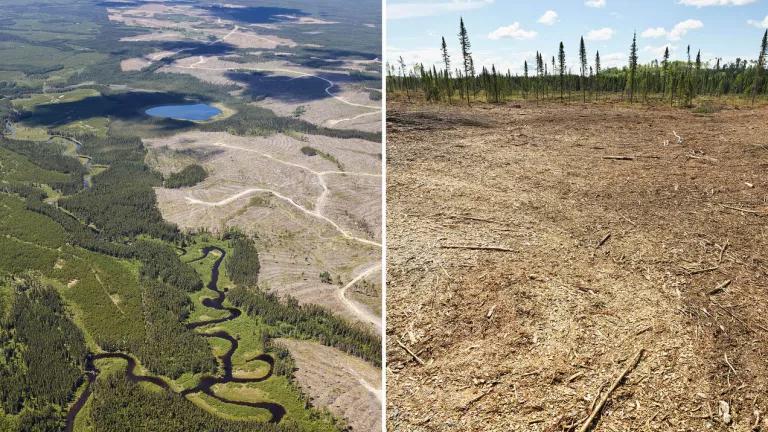Quebec Protections for Cree Land Go Far, But Not Far Enough
As part of a broader plan to meet its commitment of 17% land protection by 2020, Quebec announced a significant expansion of protected areas in Eeyou Istchee, the Cree homeland, that if realized, would double the territory’s protected area from 12% to 24%.

The Waswanipi Cree demonstration against logging in the Broadback
In the waning weeks of a year defined by significant environmental rollbacks and delays for protection, the Cree have achieved an historic commitment from Quebec to further protect their ancestral homeland in the Canadian boreal. As part of a broader plan to meet its commitment of 17% land protection by 2020, Quebec announced a significant expansion of protected areas in Eeyou Istchee, the Cree homeland, that if realized, would double the territory’s protected area from 12% to 24%. While this announcement contains critical gaps, including failing to protect the most threatened areas of the Broadback River Forest, it is a significant step forward in empowering Indigenous-led protection, realizing the Cree’s vision for their land, and safeguarding globally vital ecosystems.
Eeyou Istchee, which spans northern Quebec, is home to ten Cree communities and is globally significant in addressing the dual climate and biodiversity crises. With some of the most carbon-dense forests in the world and habitat for threatened species like boreal caribou, expanding Cree-managed protection shows the intersection between empowering Indigenous self-determination and ensuring a livable world for future generations.
The protected area reflects over ten years of work between the Cree Nation Government and the Cree communities, who melded Indigenous knowledge and science, Western research, and meticulous modeling to create the Cree Regional Conservation Strategy. This Strategy envisions protection for 30% of Eeyou Istchee, encompassing key cultural sites, wildlife habitat, and areas integral to passing on knowledge of the land to youth. The protected areas announced today is a significant step toward achieving the full implementation of that Strategy.
While this is an historic announcement, there are still significant gaps that leave critical regions open to development. One of the most gaping holes is the lack of sufficient protection in the Broadback, one of the last intact forests in the Waswanipi Cree’s territory and an area of particular climate importance. Across the rest of Waswanipi territory, clearcuts and over 30,000 km of logging roads scar the landscape, but the Broadback remains a rich, intact refuge for species like boreal caribou and in area inextricable from Eeyou Pimatseewin—the Cree Way of Life. Waswanipi tallyman and Band Council member Don Saganash explained, “This is our territory, it’s us.”
In the face of encroaching industrial logging, the Waswanipi have been calling for protection of a part of the Broadback called in Cree the Mishigamish for over 15 years. Under the Agreement to Resolve the Baril-Moses Forestry Dispute (“2015 Agreement”), Quebec promised to engage in “meaningful discussions” around safeguarding this critical area, and, in the wake of the province’s inaction, last year the community passed a resolution last year calling for its “absolute protection.”
However, today’s announcement includes just a fraction of the area of the Mishigamish and does nothing to abate the imminent threat logging poses to the southern portions of this region. Over 1,900 hectares of forest in the Mishigamish are still slated for industrial logging within the next three years under current forest management plans.
The announcement is an important commitment to Indigenous-led protection, but it needs to mark the start of a broader push from Quebec to invest in Indigenous-led protection and empower Indigenous communities across the province to dictate the future of their territories. The threats still facing Indigenous lands are the same threats driving the climate and biodiversity crises around the world. Indigenous Peoples are the most knowledgeable, effective stewards of the land, with their rights inseparable from securing a just, sustainable future. In 2021, Quebec needs to build on this recognition of Indigenous leadership, ensuring those rights for all communities.




